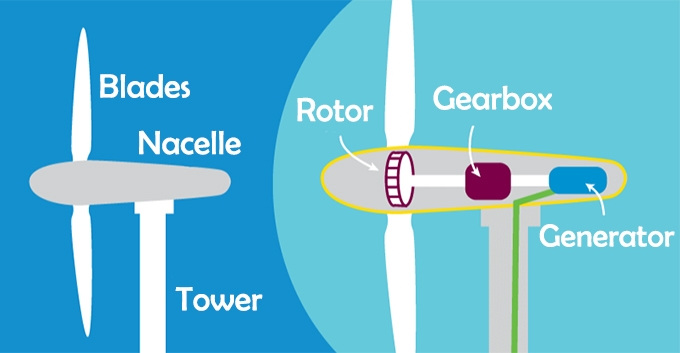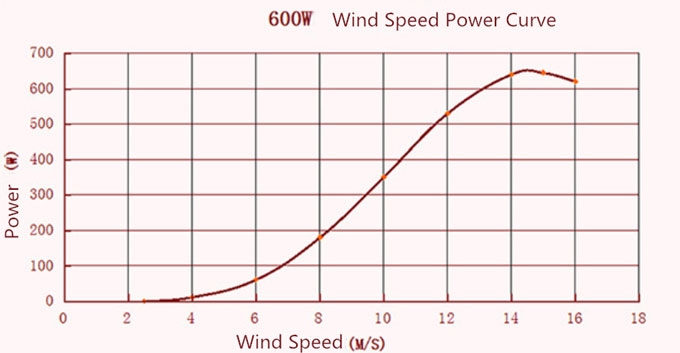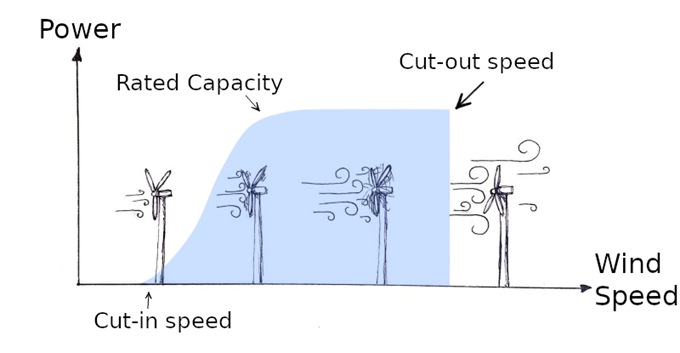Wind power is creating a boom in the world because it has no fuel problems and does not produce radiation or air pollution. With the increasing global demand for renewable energy, wind energy has become one of the most important renewable energy sources in the world. A wind turbine generator is an important device for converting wind energy into electricity, and this blog will detail how a wind turbine works.
Working Principle of Wind Turbine
Modern wind turbines are based on aerodynamic principles, just like the wings of airplanes. The wind does not "push" the blades of the wind turbine, but rather blows across the blades creating a pressure differential between the front and back of the blades, which generates lift, causing the wind turbine to rotate and continuously cut across the wind flow.
The blades of a wind turbine do not extract all the power of the wind. According to Betz's law, the theoretical maximum power that a wind turbine can extract is 59.6% of the power of the wind. Most wind turbines can only extract 40% or less of the wind's power.
Due to its simplicity, it is not difficult to make a wind turbine model with common materials. If you are interested in crafts, you can refer to the tutorial How to DIY wind turbine generator to make one.
Basic Knowledge
A wind turbine consists of three main parts: the blades, the nacelle and the tower. Among them, the blades are the key part of the wind turbine generator, which plays a vital role in the capture and conversion of wind energy. The shape, length and arrangement of the blades affect the performance of the wind turbine generator. Typically, depending on the tower height, blade size and rotor diameter, wind turbines can be categorized into small, medium and large wind turbines. The most common configuration for large, grid-connected wind turbines is a horizontal-axis, three-bladed wind turbine and mounted on an upright tubular tower, as shown in the diagram below:

Working Process
-
Capturing wind energy: When the wind blows through a wind turbine, the kinetic energy of the wind is transferred to the blades. Simple wind turbines usually have two fixed speeds - low in weak winds and high in strong winds. Today's newer turbines generally have variable speed designs, which are more efficient and less noisy in weak winds.
-
Energy conversion: The blades of a wind turbine are set on a rotor axis. When the blades are rotated by the wind, the rotational power is transmitted to the generator through the shaft and the gearbox, which causes the rotor of the generator to start rotating with mechanical energy.
The generator utilizes the principle of electromagnetic induction, where a magnetic field exists between the rotor and stator. As the rotor rotates, the magnetic field changes, and this change produces an induced current in the stator. In short, the rotation of the shaft causes the generator to produce an electric current that converts mechanical energy into electrical energy. -
Output or storage: The electrical energy produced by the generator is processed by the wind turbine controller and inverter, and then output to the load or storage device through wires for power transmission. Larger wind turbines are usually connected to the power grid, while smaller wind turbines are generally used in conjunction with batteries.
Power of Wind Turbine
Power Curve
The performance of a wind turbine can be expressed as the power curve, which serves to show the output power of the wind turbine at different wind speeds (cut-in to cut-out). The figure below shows the power curve of a 600 watt wind turbine:

Rated Power
The rated output power of a wind turbine is set to match a specific rated wind speed. Since energy is proportional to the cube of the wind speed, the power of a wind turbine varies greatly as the wind speed changes.
Wind turbines of the same construction and fan diameter can be used with different sized generators, so two wind turbines that look the same may have different rated power, depending on whether they are designed to work with strong or weak wind areas.
Power Regulation
The power output of all wind turbines is variable with wind force. The most common method of limiting power output (and therefore pressure on the blades) in strong winds is stall regulation. With a wind turbine that uses stall regulation, strong winds that exceed the rated wind speed cause disturbances in the airflow through the blades, causing them to stall. When the wind is too strong, a braking mechanism at the end of the blades is activated, causing the blades to apply the brakes.
When the wind speed is low, the blades of the wind turbine remain stationary. When the wind speed reaches the cut-in speed, the blades begin to rotate again and pull the generator. As the wind gets stronger, the power output increases. When the wind speed reaches the rated wind speed, the wind turbine outputs its rated power, after which the output will remain roughly constant. When the wind speed increases further and reaches the cut-out wind speed, the wind turbine brakes and no longer outputs power to avoid component damage.

Through the above introduction, we can understand the whole process of converting wind energy into electricity by wind turbines. Without wind, the wind turbine can also continue to work with energy storage devices to power your off-grid home. As a kind of clean energy device, wind turbine plays an important role in reducing greenhouse gas emissions and realizing sustainable energy development, and has a broad application prospect.
(1).png)
(1).png)